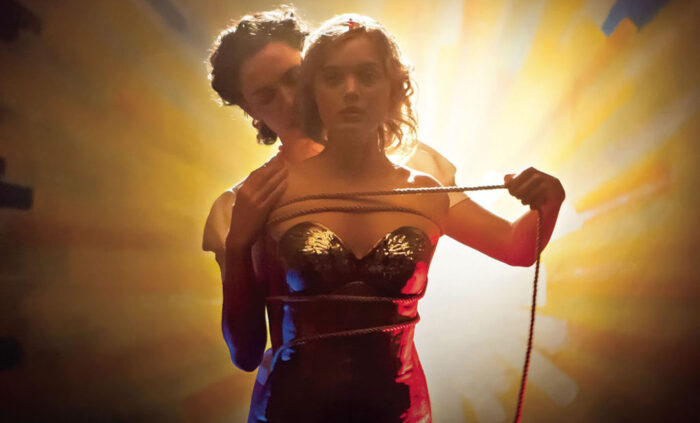The feature film Professor Marston and the Wonder Women (dir. Angela Robinson, 2018) is based on the true story of the creators of the Lie Detector test and the DC character Wonder Woman. Criticised in reviews and by the Marston family for queering up the relationship between Elizabeth Marston and Olive Byrne, it is exactly what we need to see more of – two women holding equal power in a thruple rather than a popular view that William Marston was having his cake and eating it.
Refreshing to see after decades of films in which queer relationships have been hetwashed and strong queer characters in source materials like books, graphic novels, and real life fail to make it into the screenplay. Like Ayo and Aneko in Black Panther, Idgie and Ruth in Fried Green Tomatoes at the Whistlestop Cafe whose original scenes of same-sex romances are absent on the big screen. Laughably, in Ian Fleming’s book of the same name, Pussy Galore is introduced as the leader of an all-lesbian crime ring, but in the film she becomes another of James Bonds’ seductions. Even more fantastic is that Wonder Woman was outed by writer Greg Rucka saying that given that she grew up on the all-female island of Themyscira, there was no reason why she would not have had same-sex relationships, “It makes no logical sense otherwise.” In the film however she ends up falling for a man. Elsewhere in fantasy, the many heterosexual representations of Hercules contradict the famous ancient myths describing him as loving women and men alike.
It is a disservice to all audiences when LGBTIQ characters are minimised (My Best Friend’s Wedding, Xena Warrior Princess etc), and where their sexuality is contained to safe, desexualised interactions with straight characters in a world where all characters are assumed hetero unless we’re told otherwise. Much of this pejorative treatment originates in the US motion picture morality guidelines, the Hollywood Hays Code, created by the Catholic Church. The code governed what could and could not be shown on the silver screen between 1930 and 1966 and attitudes from those times holds queerness up as immoral. This continues to impact us today in bias of age ratings for films – where sexual behaviour between two men receives a stricter age rating than the same behaviours between a woman and a man, posing commercial as well as moral difficulties for filmmakers and their backers who naturally want their film to reach the widest market. It is a particularly sensitive issue when horror or terror appears to be acceptable in children’s films while queerness is not. In 2014, Dr. Ian Colman and Dr. James Kirkbride published their study in the British Medical Journal, finding that cartoon characters die 2.5 times as often, are three times more likely to be murdered, and are frequently killed in brutal, dramatic fashion when compared to characters in adult dramas. In the world of film censorship, queerness paradoxically represents more danger to morality than bloody murder. A striking example of this is Disney’s live action remake of Beauty and the Beast 2017 where a young Belle falls in love with a Beast, arguably because of Stockholm Syndrome. Nevertheless the most controversy arose from the subplot between the two male characters Le-Fou and Gaston culminating in a three-second dance together at the end of the film. That dance led to distribution hell in several countries, and in a corner of Alabama, USA.
Spanning 70 years and just 359 titles, Wikipedia’s list of live action films with LGBT characters peaks in 2017 with 15 mainstream movies. The made-for-tv films and animation are far less representative. GLAAD, the American media monitoring organisation’s latest annual report Accelerating Acceptance 2018 reports a drop in acceptance for LGBTQ people for the first time. As authentic LGBTIQ storylines are under more pressure from censors, funders and the prevailing political climate, we can expect to see fewer queer characters in the mainstream.
The established LGBTIQ film festivals offer audiences an amazing range of authentic stories only a few of these will reach the mainstream. The vast majority of films screened in festivals are never seen again, and this is especially true of short films where the rich variety of queer life comes through unadulterated by others. In these difficult times LGBTIQ filmmakers from around the world continue to present us with excellent, unashamedly queer works that reflect the truth of our times.
The QueerBee platform collects, collates and screens LGBTIQ festival shorts online and in cinemas,
